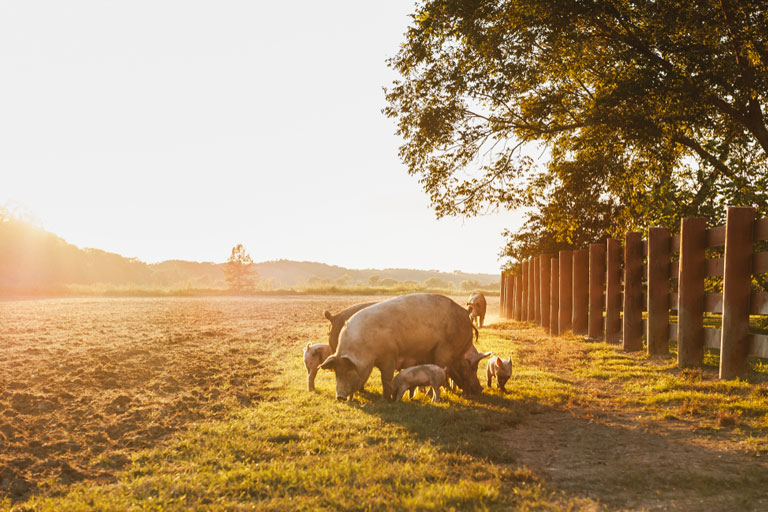
25 Sep Gilts: Are you giving the proper attention to your farm’s future?
Giannis Karvelis, Nuevo S.A, g.karvelis@nuevo-group.com
Published on May 22,2013 – www.WATTAgNet.com
The breeding gilt, bred on the farm or outsourced, is an extremely valuable animal that ensures the ongoing productivity of every pig farm. Nowadays, the yearly replacement rate in commercial farms is approximately 45 percent, which is nearly half of the total sow population!
It is, therefore, particularly from a financial point of view, of great significance to take a closer look to the nutrition of this special group of animals. Furthermore, it is well known that the nutrition of young, developing gilts has a tremendous impact on the lifetime performance of the sow.
Gilt development phase
The development phase begins in the early stages of a gilt’s life and is complete when the female is first served. On-farm application of a tailor-made feeding program for young breeding stock should start ideally at 25 kg live weight, although under current commercial conditions this often is impractical. Nevertheless, it is important to fully benefit from the high appetite of modern, super lean genetics. To this end, and to ensure that the reproductive organs will develop properly, a special ‘gilt’ starter diet must follow the normal nursery program after 25 kg live weight. This diet should be provided up to 40-45 kg body weight.
In most commercial farms, however, breeding stock nutrition differentiation from that of market pigs normally starts at approximately 50 kg of live weight. From this point on, it is easier and more practical to offer special designer feeds more appropriately tailored to the nutritional requirements of young gilts.
Based on field experience, two or three diets—depending on weight range—are essential as a follow up, to ensure proper gilt development. All these gilt diets should be fed at around 2.5 to 3.5 kg per day and head (depending upon desired growth rate, housing facilities, health, genetics, and management conditions). Three weeks before first service (mating), a high-energy diet (approximately 10.5 MJ/kg net energy) should be fed to appetite to stimulate the gilts and ensure a high ovulation rate.
Nutrient specifications
Compared to finishing diets offered to market pigs, gilt diets should be less nutrient dense, at least in terms of energy and amino acids, aiming to an average daily gain of approximately 550-650 grams from birth until first service. Given that the age and body condition at which young females attain puberty, and are first mated, have a significant effect upon lifetime productivity, controlling growth rate becomes obviously the goal of a successful nutrition program.
Invariably, adjustments in growth rate must be affected through the adjustment of the type (nutrient specification) and not the quantity of the diet. This ensures gilts will be sufficiently mature in age, be of the targeted body size, and have adequate fat reserves at the time of first insemination.
The calcium and phosphorus requirements of developing gilts are higher than those of finishing (market) pigs of similar age. This is because in gilts bone development is required to reach maximum potential to build lifelong mineral reserves. These two minerals are very important not only for skeletal development, but also for fetus development and sufficient milk yield. Therefore, a deficiency in calcium and phosphorus early in life will result in impaired bone mineralization, reduced bone strength and mineral reserves.
Likewise, vitamin levels should also be higher (again, compared to needs for finishing pigs) to prepare the gilts for the forthcoming high requirements for reproductive performance. This is true for both fat and water-soluble vitamins, and a specific reference should be made to vitamin A, which is an essential nutrient as it affects the action of retinol-binding protein (one of the uterine secretory proteins). Therefore, even indirectly vitamin A is involved in the establishment and maintenance of pregnancy.
Feeding modern gilts
Modern, hyper-prolific gilts offer significant reproductive potential, but at the same time it is absolutely clear that such genetics are absolutely reliant to careful and proper nutrition during the development phase. To this end, on farm application of “tailor made” feeding strategies are required to ensure gilts have the correct body size at first service; otherwise, it is always difficult, if not impossible, to correct a “wrong start.”
Find out more about NUEVO’s macro-premixes for sows and gilts and macro-premixes for growers and fatteners




